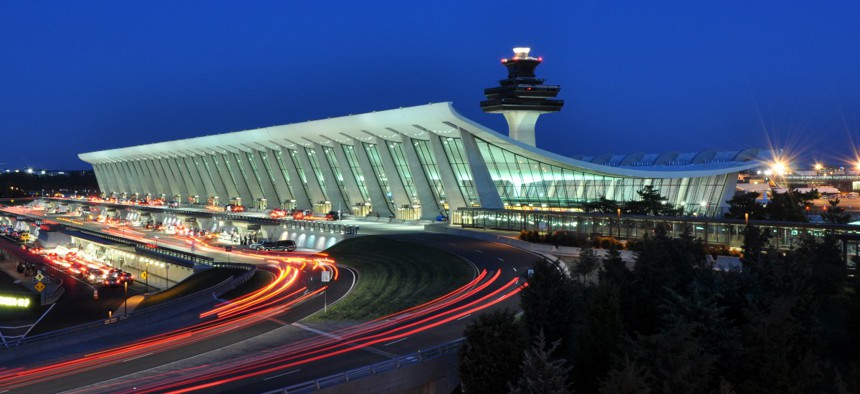Parsons, IBM form air traffic control modernization pursuit team

Washington Dulles International Airport Gettyimages.com / Joeravi
The Federal Aviation Administration is eyeing 2028 to complete its replacement of the National Airspace System's underlying infrastructure.
Parsons Corp. and IBM have formed a partnership to pursue business opportunities stemming from the Federal Aviation Administration’s push to overhaul and modernize the U.S. air traffic control system.
Transportation Secretary Sean Duffy unveiled a new blueprint in May for the FAA to replace core telecommunications and other infrastructure that are the backbone of the National Airspace System. The FAA is aiming for 2028 to complete that effort.
The White House’s fiscal year 2026 budget request asks for $13.8 billion to fund FAA operations, inclusive of a $5 billion investment in NAS modernization. Separate to that, the House Transportation and Infrastructure Committee has put forward a $12.5 billion reconciliation proposal just for air traffic control modernization.
Under this partnership, Parsons will function as the prime contractor as the team touts an open, vendor-agnostic approach with respect to the technologies being provided.
Parsons has worked with the FAA for roughly 50 years under the Technical Support Services Contract, which covers broad engineering work and includes an infrastructure modernization component.
TSSC supports the FAA”s Aviation System Capital Improvement Program that enables project management, systems installation and testing at approximately 600 locations.
“This partnership represents two American industry leaders bringing together a combined nearly 200 years of experience and expertise in complex program management and systems integration to deliver a state-of-the-art air traffic control system for our nation,” Parsons chief executive Carey Smith said in a release.
IBM is highlighting its systems integration experience across many industries, including in the federal government, dating back for almost its entire 114-year history.
“This is just the beginning, and our shared commitment to an open approach ensures that we can integrate the best available technologies to build a safe, stable and future ready airspace infrastructure that will serve the nation for decades to come,” added Mohamad Ali, senior vice president and head of IBM’s consulting unit.


